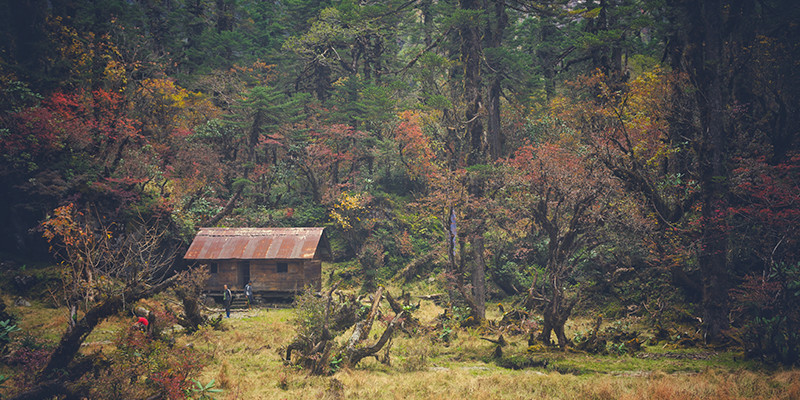
Environment
Questions concerning the pollution and degradation of the Himalaya have been taken up by the Club through programmes and in many articles in the Journal from as far back as 1973. The Himalayan Club has also supported initiatives to create National Parks, has taken a pioneering role in pushing for a Peace Park at Siachen, has conducted seminars on the environment and has published essays on environmental protection.
With the intention to focus even more attention on the Himalayan environment and greater involvement with mountain communities, a seminar was held in Mumbai on February 15, 2008. At its conclusion, it was decided to formulate action plans for projects and programmes at the practical level which would also create awareness among members and outsiders. To this end, the Club invited Dr Jurg Meyer (until recently Environmental Advisor to the Swiss Alpine Club) and Aamir Ali to put forth concrete ideas. They came out with a Report in March 2008 titled ‘The Himalayan Club and the Environment’.
The report made various recommendations. One was to reformulate the original objectives of the Club and widen the aims to read (proposed additions given in bold italics):
To encourage and assist Himalayan travel and exploration, to extend knowledge of the Himalaya and adjoining mountain ranges and its local communities through science, art, literature and sport and to protect the environment.
In terms of action plans, the report proposed a phased approach. The first phase (2008 -2009) envisaged the setting up of an Environment Commission. (The Club had already set up four sub-committees of which The Conservation and Environmental Committee was one. It was suggested that this be expanded by adding a panel of consultants to the existing core group). This phase would also launch an International fund raising appeal.
The second phase of the plan (2010 – 2011) involved hiring a specialist who would be contracted for two years to work on situation analysis and project proposals. The phase would end with the commencement of one or two of the identified projects. The authors also proposed that a document be drawn up that would provide a road map of activities for the following 10 to 15 years.
The report recognised the inability of the Club to initiate another substantial commitment given its small member base and limited finances but it felt that the commitment of the leading members, the existing network of good connections and the positive image of The Himalayan Journal internationally would provide the boost needed to get things going. Meyer and Ali also stated the importance of framing environmental positions within the general guidelines of the Club. As a starting point to the possible programmes, some inter-Himalayan Projects and Regional projects in tourist areas were also identified. Finally, the report provided a detailed work plan and budget.
The Annual Report and Accounts for the year ended 31st March 2009 clearly stated the Club’s position on the environment:
Climate change, receding and melting glaciers, deforestation and unsustainable development are some of the factors that pose an immense threat to the Himalayan environment, its flora and fauna and the lives and livelihoods of communities living along its entire range. The Club recognises that the time has come, as never before, to pay closer attention to all these factors and their potential impact on people and the environment. The Club also recognises that its own internal resources and efforts have not been marshalled in these directions before, and that meaningful impact will take considerable time to set up. Nevertheless, it wishes to add its own hand to the good work that institutions, both public and private, as well as NGOs have been doing. Towards that end it intends to mount analysis work and information dissemination on the general subject through its membership and seminars etc.

In 2009, a meet was organised in Leh, Ladakh to promote an interest and involvement in environmental issues. Again, eminent mountaineers, scientists, environmentalists, ecologists and experts congregated to suggest strategies to save the heritage of the Himalaya and address issues related to global warming. The Club released three useful publications on the subject of acclimatisation and precautions to be taken at high altitudes.
Climate Change issues are so vital that there is no choice anymore – mountaineering organisations, especially those with such goodwill and credibility as The Himalayan Club have to find the will and manpower to concern themselves and accept their share of the responsibility.
It is not heart or the dedication of members that is lacking. When in 2010, torrential rains and landslides submerged and destroyed entire villages in Leh, killing scores of people, the Club’s local secretary Motup Chewang and his team assisted tirelessly in search and rescue operations. The Club collected donations for a Rebuild Ladakh Initiative. Two villages – Kya and Skyui were adopted as also a local children’s hostel. Houses were rebuilt in the hamlets and 12 deserving families were identified by the village councils for added assistance. Extra rooms and bathrooms were constructed so that the families could start Home Stay schemes for trekkers and hikers. By 2013 reconstruction of the destroyed houses was complete and by 2015 the Home Stay rooms had also been built. For the children’s hostel, the Club constructed a ladies’ toilet block and repaired the institute’s broken down vehicles. The Club now supports the Ladakh Institute of Prevention which works in the field of assistance/ research/ prevention and healthcare in Ladakh.
On April 25, 2015 a cataclysmic earthquake measuring 7.8 on the Richter scale struck Nepal. The quake and its aftershocks killed nearly 9,000 people and close to 22,000 were injured. Villages disappeared without a trace, heritage buildings and monuments crumbled to dust. Climbers on Everest were trapped on camps 1 and 2 and pinned under toppled blocks in the Khumbu icefall. The small mountain country saw devastation beyond imagining.
The Himalayan Club immediately launched a fund initiated by Dr. Raghunath Godbole, local Secretary of the Pune section to help the victims of the earthquake. The fund received overwhelming support from members and then worked with the government of India for permission to send the funds. Unfortunately it was difficult to directly transfer money. So the collected amount was put into a bank FD and the interest will now be disbursed every year to three or four families affected by natural disasters anywhere in the Himalaya. The fund is now called ‘The Himalayan Disaster Relief Fund’.
The Himalayan Journal, in recent years has teamed up with the Nature Conservation Fund to publish articles and photo features in every volume of THJ related to environment degradation, climate change, wildlife conservation in the high Himalaya. A Citizen Science project on the subject is also being developed.
- Report: ‘The Himalayan Club and the Environment’ (March 2008)
- Photo feature – ‘The Himalayan Wildlife’ (Ghoshal A., THJ 70, Pg.185)
- Photo feature – ‘Large Mammals Of The Himalaya’ (Ghoshal A. & Humraskar D., THJ 71, Pg.186)
- ‘Explorations of Himalayan Wildlife : Mountaineers Are Key Stakeholders!’ (Bhatnagar. Y.V., THJ 72, Pg.92)
- Photo feature 2 – ‘Beauty in Diversity: A Journey through Ladakh’s Hidden Gems’ (Khanyari M. & Rathore D., THJ 73, Pg.166)
- Photo feature – ‘Canine Catastrophe in the Mountains’ (Bhatnagar Y.V., THJ 74, Pg.138)


